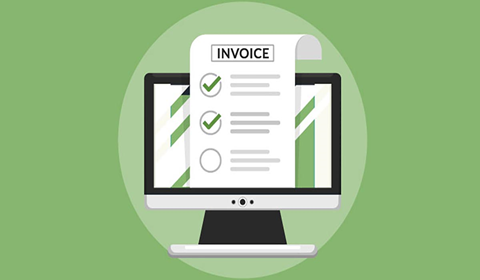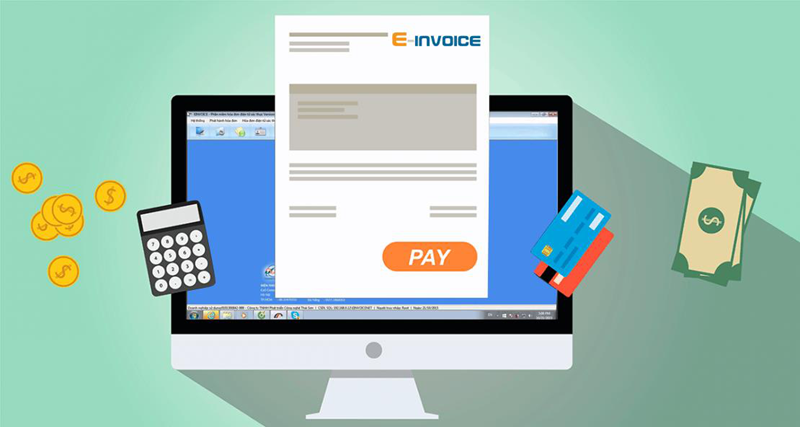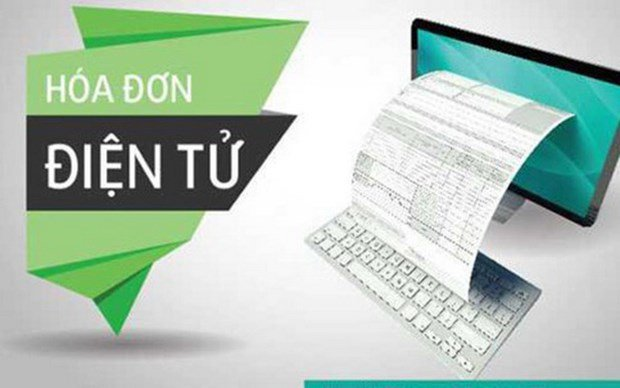Recently, the Ministry of Finance of Vietnam has promulgated Circular 78/2021/TT-BTC instructions on some contents of invoices and documents as prescribed at Law on Tax Administration 2019 and Decree 123/2020/ND-CP. In particular, a number of contents about e-invoices such as denominator symbols and e-invoice symbols are guided very specifically.

Instructions for identifying symbols on e-invoices (Artwork)
According to the provisions of Clause 1, Article 4 of Circular 78/2021/TT-BTC of Vietnam, the symbols on e-invoices include the symbol for the model number of the e-invoice and the symbol for the e-invoice.
The symbol for the e-invoice denominator is a one-digit character that is the natural numbers 1, 2, 3, 4, 5, 6 to reflect the type of e-invoice. Specifically:
- 1: Electronic VAT invoice;
- 2: Electronic sales invoice;
- 3: E-invoice for sale of public property;
- 4: E-invoice for sale of national reserve goods;
- 5: Other types of e-invoice, including electronic stamp, ticket, card, receipt or other electronic documents that have other names but have the same contents as an e-invoice as prescribed in the Decree No. 123/2020/ND-CP;
- 6: Electronic records which are used and managed in the same manner as invoices, including electronic delivery and internal consignment notes, and electronic delivery notes for goods sent to sales agents.
Reference number of an e-invoice contains 6 characters, including letters and numbers, indicating whether the invoice bears the tax authority’s identification code or not, year of issuance, and type of e-invoice. 6 characters are as follows:
- The first character: C if the invoice bears a tax authority’s authentication code; K if the invoice does not bear a tax authority’s authentication code;
- The next two characters are the last two digits of the year in which the e-invoice is issued, written in Arabic numerals. Example: 22 if the e-invoice is issued in 2022; 23 if the e-invoice is issued in 2023;
- The next character is either T, D, L, M, N, B, G or H depending on the type of e-invoice. To be specific:
+ T: E-invoices registered with tax authorities by enterprises, organizations or household businesses;
+ D: E-invoices used for sale of public property or national reserve goods or special e-invoices that do not have some mandatory contents of the “T” invoices;
+ L: E-invoices issued separately by tax authorities;
+ M: E-invoices generated by cash registers;
+ N: Electronic delivery and internal consignment notes;
+ B: Electronic delivery notes for goods sent to sales agents;
+ G: VAT invoices in the form of electronic stamps, tickets or cards;
+ H: Sales invoices in the form of electronic stamps, tickets or cards.
- The last two characters shall be decided by the seller to serve their management requirements. If the seller uses different forms of the same type of e-invoice, the last two characters shall be used to differentiate such e-invoice forms. If the seller does not decide the last two characters, YY shall be specified;.
Specific examples of symbols on e-invoices are as follows:
+ “1C22TAA” - an authenticated VAT invoice issued in 2022 and registered with the tax authority;
+ “2C22TBB” - an authenticated sales invoice issued in 2022 and registered with the tax authority;
+ “1C23LBB” - an authenticated VAT invoice issued in 2023 and issued separately by the tax authority;
+ “1K23TYY” - an unauthenticated VAT invoice issued in 2023 and registered with the tax authority;
+ “1K22DAA” - an unauthenticated VAT invoice issued in 2022 and does not have some mandatory content of those registered with the tax authority;
+ “6K22NAB” - an unauthenticated delivery and internal consignment note issued in 2022 and registered with the tax authority;
+ “6K22BAB” - an unauthenticated delivery note for goods sent to sales agents issued in 2022 and registered with the tax authority.
Note: the e-invoice symbol and the e-invoice model number are shown on the upper right of the invoice (or in a recognizable position).
>> See also: Instructions for e-invoices generated from cash registers
Bao Ngoc
 Article table of contents
Article table of contents










.Medium.png)
.Medium.png)
.Medium.png)
.Medium.png)
